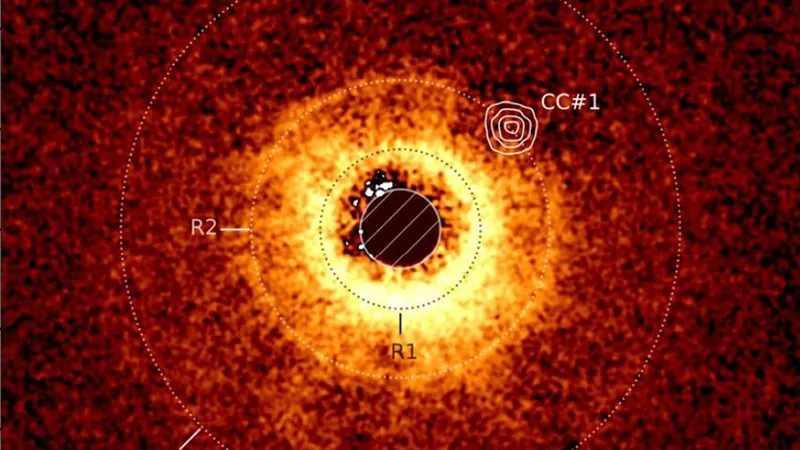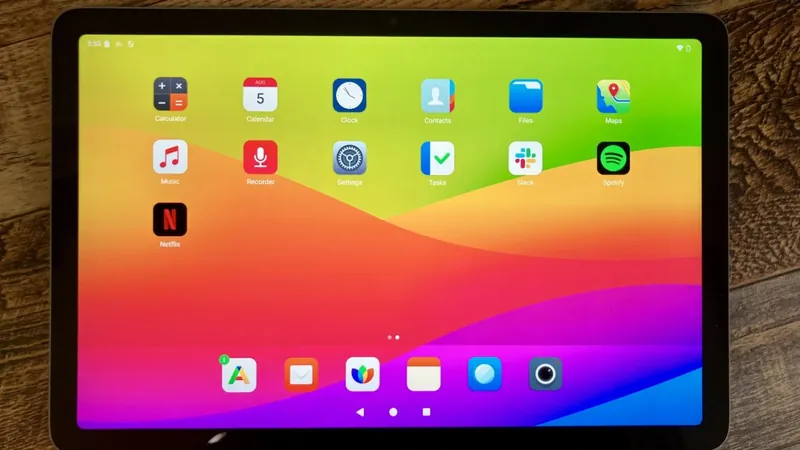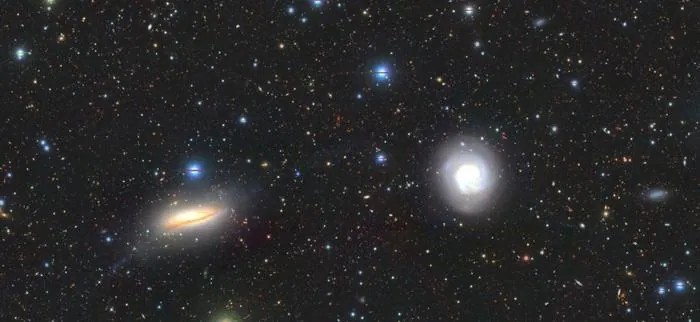
James Webb Telescope Breaks Ground with New Exoplanet Discovery: A Step Closer to Earth 2.0!
2025-06-25
Author: Liam
A Groundbreaking Discovery!
In an extraordinary breakthrough for space exploration, the James Webb Space Telescope (JWST) has captured stunning images of its first new exoplanet, TWA 7b. Located approximately 111 light-years away, this planet, roughly the same mass as Saturn, stands out as the lightest exoplanet ever directly imaged, igniting hope in the search for Earth-like worlds beyond our solar system.
How Was TWA 7b Discovered?
The discovery of TWA 7b was made possible thanks to the advanced capabilities of the Mid-Infrared Instrument (MIRI) onboard JWST. By using a coronagraph, astronomers created an artificial eclipse, enabling them to block the overwhelming light of its host star and reveal the planet. This innovative technique goes beyond the traditional transit method, where tiny dips in star brightness signal a planet’s presence. For TWA 7b, astronomers benefitted from a perfect 'pole-on' view of the TWA 7 star system, allowing them to identify its unique three-ring debris disk.
A New Target in the Hunt for Earth-Like Planets!
Weighing in at about a third of Jupiter's mass—equivalent to roughly 100 times that of Earth—TWA 7b sets a new record as the lowest-mass exoplanet ever captured through direct imaging. This remarkable find showcases JWST’s unparalleled ability to detect smaller and colder planets, pushing the boundaries of our understanding. Researchers are optimistic that with further advancements in coronagraph technology, we could soon directly image Earth-sized planets, bringing us one step closer to discovering an Earth 2.0.
Innovative Techniques in Space Exploration
Adding to the excitement, the European Space Agency recently unveiled the first images of an artificial total solar eclipse from its Proba-3 mission. This innovative setup comprises two satellites that glide in precision formation to create a six-hour total eclipse during each 19.6-hour orbit. This rare celestial phenomenon will allow scientists to examine the sun’s corona—its sizzling outer atmosphere—unveiling mysteries that are typically hidden from view.
What’s Next?
As the JWST continues to reveal the wonders of the universe, the hunt for Earth-like planets grows ever more thrilling. With ambitious plans already in motion to identify new targets, the next few years promise to bring even more incredible discoveries. Who knows? An Earth-like planet could be just around the corner!









 Brasil (PT)
Brasil (PT)
 Canada (EN)
Canada (EN)
 Chile (ES)
Chile (ES)
 Česko (CS)
Česko (CS)
 대한민국 (KO)
대한민국 (KO)
 España (ES)
España (ES)
 France (FR)
France (FR)
 Hong Kong (EN)
Hong Kong (EN)
 Italia (IT)
Italia (IT)
 日本 (JA)
日本 (JA)
 Magyarország (HU)
Magyarország (HU)
 Norge (NO)
Norge (NO)
 Polska (PL)
Polska (PL)
 Schweiz (DE)
Schweiz (DE)
 Singapore (EN)
Singapore (EN)
 Sverige (SV)
Sverige (SV)
 Suomi (FI)
Suomi (FI)
 Türkiye (TR)
Türkiye (TR)
 الإمارات العربية المتحدة (AR)
الإمارات العربية المتحدة (AR)